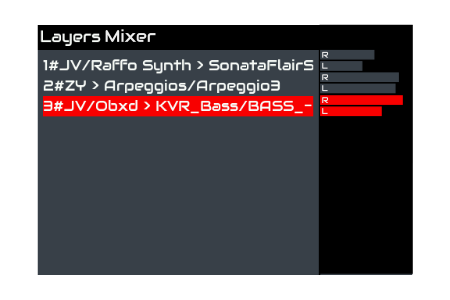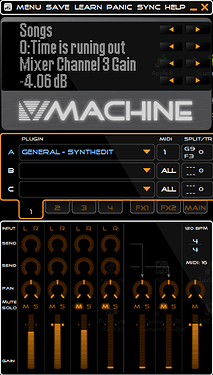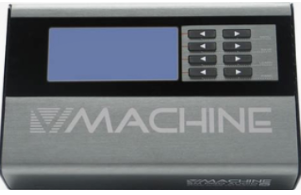Hi @zynthianers!
I’ve been testing a little bit the zynmixer branch in an “official” zynthian v4 and i must say that it’s very difficult to read the channel’s vertical text on the 3.5" display. Also, normally you see the layer as a list, so changing to a column arrange with vertical texts is confusing as you have to remap in your brain every layer to a vertical bar with a tiny vertical text, or remember the MIDI channel for every layer, etc.
I would like to suggest rethinking the layout and try a list approach, so you can read the layer text horizontally, in the same format used by the layer list. In fact, i would suggest to use the layer list as a base , using the right area (that currently displays the zynthian logo and an selector encoder counter) for displaying the level bars. Somthing like this:

As you can see , this is perfectly readable in small displays and also keeps the visual feeling from the layer list, so your brain quickly realizes what is what. We could use “back” and “select” rotaries for adjusting Left & Right, and move on the list by clicking “select”. Or perhaps use “shot” and “layer” rotaries for adjusting levels and select rotary for moving on the list.
Of course, touch interaction would have to be rethought too, but i must insist on the fact that touch interface is not the primary interface of zynthian. Encoders + Switches are.
Zynthian touch-interface was conceived, firstly, as a complement to the encoders interface. In fact, the X-Y controller was the first element of the zynthian’s touch interface. After that, the rest of the touch-interface was created as a convenient secondary/auxiliar/testing interface. I know that some people use this interface as the primary interface, but it’s far from optimal. Creating a good-enough native touch-interface for zynthian is a HUGE task and perhaps it would be better to invest this effort and time on creating a good remote API and then use a tablet touch-framework (android/apple) for programming a modern GUI that controls zynthian remotely.
Also, i don’t like the idea of replicating a full DAW on zynthian. Sometimes i’ve used the word “micro-DAW”, but what this means is something new. Something you can you use for doing some things (not all the things!!) that you normally do with a DAW, but with a different, minimal approach.
So please, let’s be minimal and let’s think on real use-cases for zynthian … not trying to replicate DAW functionality.
Regards!
 . . .
. . . .
.

